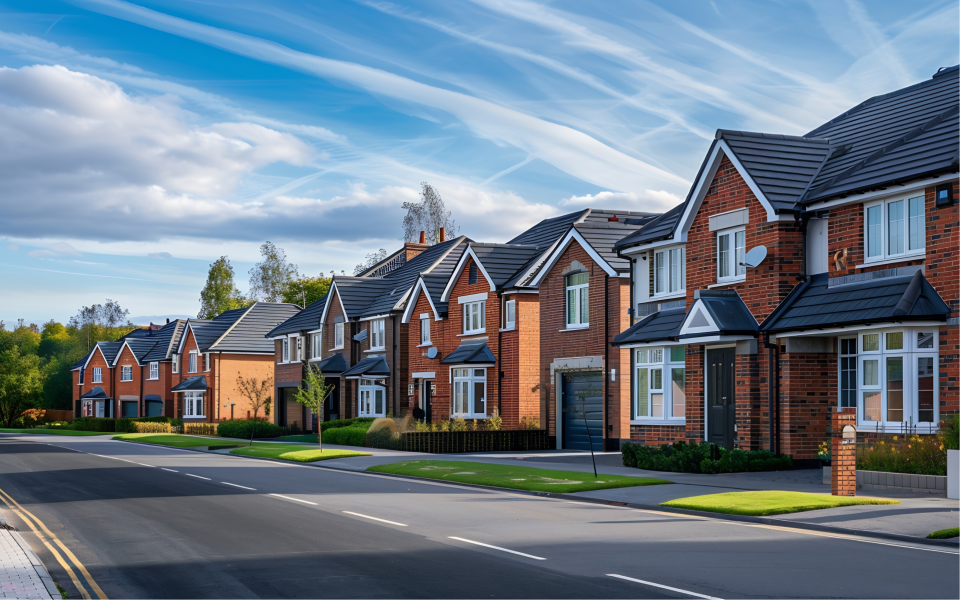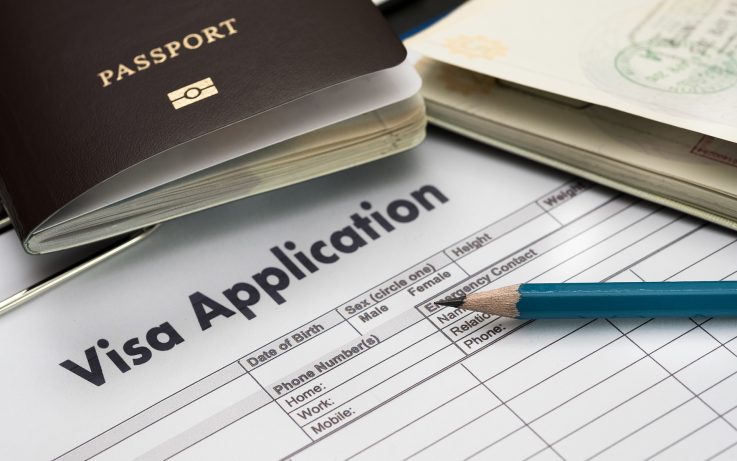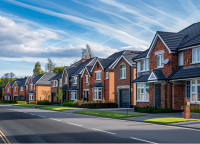Residential property types in UK

The UK housing market is extremely diverse, so it’s possible to choose the option that’s right for you. And to make it easier to decide whether you need a home to live in or a good investment, we can help you understand and compare properties.
The main types of property:
- flat;
- apartments;
- studio;
- maisonette;
- terraced house;
- semi-detached house;
- bungalows;
- cottage;
- detached house;
- mansion.
All types of residential properties differ in terms of house size, storey and neighbours.
Flat
A flat is a residential property with all parts of the property on one floor. It usually consists of several rooms and is the most common type of property for people in the UK. The small size of a flat is enough for a single person to live alone or may even be suitable for a small family.
Apartments
An apartment is an object that is more prestigious in every sense. The rooms may be located on several levels and the quality of finishing is higher than in a flat. Location is closer to the city centre, where, as a rule, there is a fitness room, swimming pool, garden. Living in such a property is more comfortable and convenient, but more expensive than in a flat.
All flats and flats have several sub-types, which differ in layout and affect the comfort of living.
- Purpose-built flats – when a house is originally built as an apartment block, meaning each living space is separated from each other according to an architect’s design.
- Flats in buildings that were not intended to be subdivided. However, later reconstruction was carried out, as a result of which the structure was divided into separate flats.
Studio
A studio is a flat, the layout of which usually involves one large room and a separate bathroom. A large room can be divided by the occupants with furniture or special fences, and sometimes only conditionally zoned into kitchen, bedroom and so on. But in fact, all functional areas are in a single space.
Usually, a studio is considerably cheaper than an equivalent flat. However, in big cities, with good transport links and great living opportunities, space is very limited, and studios are in high demand, resulting in high costs.
Maisonette
A maisonette is a more comfortable flat, as it has its own exit to the street. Often a maisonette is two-storeyed, which confuses it with ordinary duplex flats, which are not maisonettes, as they have common corridors with other flats.
This type of property is ideal for a young family.
The average cost of a maisonette will be around 10-15% higher than a normal flat price.
Terraced house
In the UK there is such a phenomenon as a continuous line of houses built right up to each other. They have the same layout, each with its own private access to the street. Each terraced house is designed to accommodate one separate family.
This type of construction is the most successful, because due to the dense location requires much less land area than detached houses. In turn, this entails a more affordable cost of such a residential property. The comfortable terraced house is the most popular type of residential property and accounts for more than 30% of all homes in the UK.
End of terraced houses
Each line of terraced houses has its own beginning and end – one distinctive house on opposite sides. They have a different layout to those within the row. For example, your garden is likely to be larger than your neighbours in the row. There is also a high probability of having a driveway or even a garage.
Due to their location and the presence of neighbours on one side only, these houses are more prestigious and more expensive than those in the middle. This is a good compromise between a townhouse and a semi-detached house.
Semi-detached house
The building was originally built as two houses joined together. Each flat is independent, including access to the street. A favourable advantage compared to the popular townhouse, which is in a row of houses.
Bungalow
A bungalow is a detached single-storey house and sometimes the occupants convert the attic to a first floor. It is still required to retain the sloping roof and dormer windows of a true attic.
As there are no stairs and all rooms are on the ground floor, this type of property is ideal for the elderly and for people with disabilities. However, rising property prices are making bungalows increasingly popular with younger people as well.
If you don’t want to live in a flat, but are a bit tight on funds, a bungalow is perfect for you. Enjoy the advantage of a detached property – privacy and garden, without the high price tag.
Developers are now trying not to build bungalows. Therefore, the cost of this type of housing has increased by 17 per cent.
Cottage
The beautiful word cottage refers to the detached houses that farm labourers – cotters – rented in exchange for their work, which is why the houses are so named. Therefore, a large proportion of cottages are in rural areas. Town houses are more correctly called cottages. The Cambridge Dictionary gives a rather vague definition of the term “cottage”, due to which it can be formally applied more broadly.
Detached house
Affordable, but already quite expensive and elite type of residential property, compared to a cottage. A house designed to accommodate only one family. To such a house, as a rule, adjoins a garden plot. We advise you to choose a detached house in a less prestigious area, than for the same money a flat in a better location, but with neighbours.
Mansion
The term “mansion” is understood to mean “a large and impressive house”. However, it is worth realising that a mansion is not just a detached house: it is much larger, more spacious and necessarily expensive. Only wealthy people can afford to buy a mansion and build a family nest there.
Buying a residential property in the UK should be done when you have a clear understanding of its future use: rental or personal residence. It is necessary to plan the size of the budget for the purchase of a house, as well as assess the degree of comfort of living in it. For a single person may well be suitable for a flat or apartment. And if you choose a studio, then the organisation of home life will be as easy as possible. Whereas maintaining the life support of a mansion will require a lot of money and considerable effort. Intermediate options can be flats, bungalows, cottages and others – depending on personal preferences. Consultation with a qualified specialist will help you choose your future home, considering all the many nuances.
Comparative table by number of neighbours and number of storeys
|
property type |
number of neighbours |
storey |
|
flat |
many |
1 |
|
apartments |
many |
1-2 |
|
studio |
many |
1 |
|
maisonette |
many |
1-2 |
|
bungalow |
0 |
1 |
|
townhouse |
2 |
small |
|
end terrace |
1 |
small |
|
duplex |
1 |
small |
|
detached house, cottage |
0 |
small |
|
mansion |
0 |
unrestricted |
FAQs about types of property in the UK
How can I tell the difference between a terraced house and a semi-detached house in England?
A terraced house is a house that is part of a long continuous row of buildings, originally built so that each has 2 common walls with neighbours – on opposite sides. In a terraced house, as in a semi-detached, each family has a separate exit to the street. The difference lies in the number of neighbours: in a semi there are only one neighbour, while in a terraced house each resident will always have two neighbours. An exception is an end of terrace: this building also has only one neighbour on the side, but it differs from a semi in its location. A terraced house is at the end or beginning of a long row of identical houses, whereas a semi is built separately from the other buildings.
What is the difference between a bungalow and a detached house?
A bungalow, like a house, is a detached building designed for a single family to live in. However, even if a bungalow is large enough, it cannot become a house: bungalows are always strictly one-storey. It is possible to conditionally turn a bungalow into a two-storey building by improving the attic, but such a property cannot be built further up.
At the same time, the house does not have such a limitation on the number of storeys, thus boasting a larger floor area. Houses are most often associated with more comfortable and spacious accommodation.
What is the difference between a maisonette and a duplex apartment in England?
The maisonette and duplex apartments are located in an apartment block.
A maisonette can be either a single level or a duplex.
The main difference – Maisonette is equipped with a separate exit to the street, while in duplex apartments neighbours are united by a common corridor and stairs.







